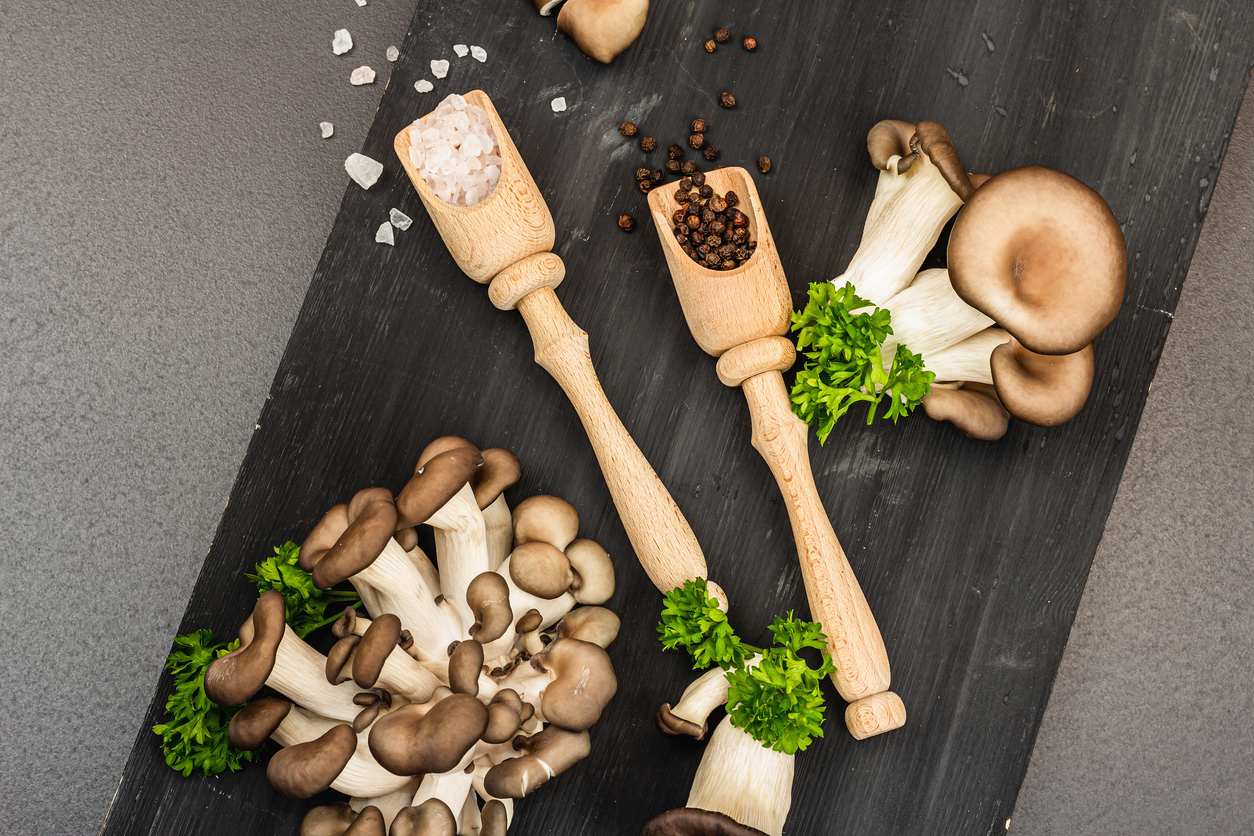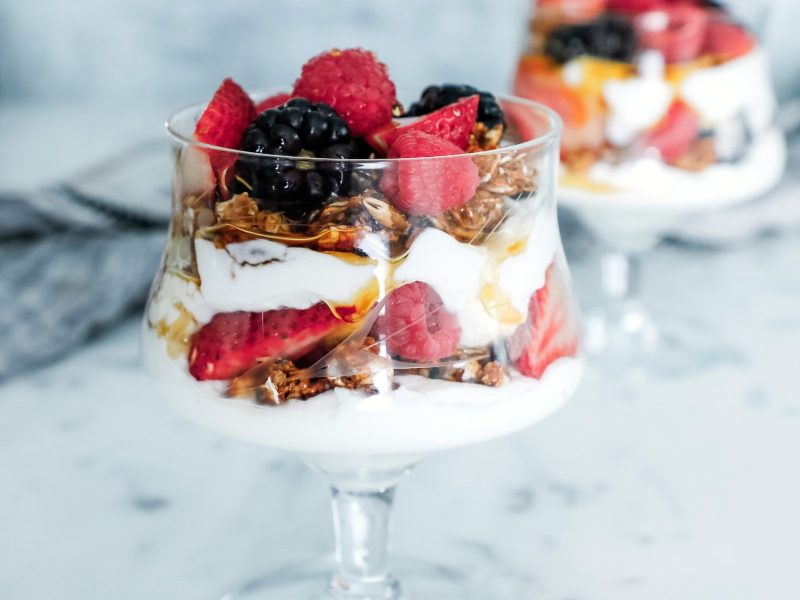Beta-glucans are a type of soluble fiber found in the cell walls of yeast, mushrooms, oats, and barley that have been shown to provide immune-modulating effects.
While all beta-glucans have health benefits, the beta-glucans derived from yeast and mushrooms have specific effects on the immune system due to their unique structure. They are among the few compounds that can stimulate and regulate the immune system at the same time.
In this article, I’ll explore the mechanisms and research behind yeast and mushroom beta-glucans as “biological response modifiers,” outline their unique immune health benefits, and explain how to implement them into your daily routine.
What is a “biological response modifier” (BRM)?
Many compounds and medications that affect immune function either suppress or boost it.
For example, steroids are used to globally suppress a hyperactive immune response in people with autoimmune diseases. While suppressing the immune system can relieve the symptoms of these conditions, the obvious downside is that it reduces immune defense against pathogens and cancer.
On the other hand, some botanicals like echinacea and astragalus boost the immune response. This can support our defense against infections caused by viruses and other pathogens. But the problem with boosting is when it goes beyond supporting and causes overstimulation. This can manifest as autoimmunity, allergies, asthma, or other immune-related dysfunctions.
BRMs (including beta-glucans) fundamentally differ from immune-suppressing or immune-boosting compounds. They support innate immunity by priming and “training” the body’s innate immune cells to react more quickly when a pathogen is detected.
Training the immune system is a newly recognized phenomenon that occurs when innate immune cells encounter specific pieces of microbes (living or nonliving), causing the cells to respond more effectively to a future threat. Innate immune cells retain a “memory” of the experience that allows them to respond more quickly and effectively when they encounter another pathogen. This is essential for immune defense because it protects from pathogens we’ve never encountered before.
Yeast beta-glucans as BRMs
Yeast beta-glucans are derived from the cell walls of yeast, such as Saccharomyces cerevisiae. They have a soluble fiber structure consisting of glucose molecules bonded in beta-1,3 and 1,6 linkages (*). This gives them a unique triple-helical tertiary structure.
The main mechanism of action of yeast beta-glucans as BRMs involves activating various immune cells, particularly macrophages. When consumed, the fibrous beta-glucans bind to receptors like Dectin-1 and CR3 on macrophages. This triggers signaling cascades that help them to engulf and kill invading pathogens like viruses and bacteria. (*)
Yeast beta-glucans promote the release of inflammatory cytokines like tumor necrosis factor-alpha (TNF-alpha), interleukin-1 (IL-1), and interleukin-6 (IL-6). (*) This might sound harmful, given the negative impact of chronic inflammation, but acute inflammation is a critical part of our immune response. The release of these cytokines primes macrophages to react against pathogens or other threats. Yeast beta-glucans also stimulate macrophages to release reactive oxygen species that can kill pathogens. (*)
Given these mechanisms, it’s no surprise that studies have shown that yeast beta-glucans reduce the incidence and severity of upper respiratory tract infections during cold and flu season. (*)
In addition to priming the immune system to fight threats, yeast beta-glucans help to reduce hyperactive immune responses like allergies and autoimmune diseases.
A study of people with ragweed allergies found that yeast beta-glucans reduced total allergy symptoms and symptom severity and improved quality of life and mood. (*) Another study found that 1,3/1,6-beta-glucans reduced psoriatic arthritis symptoms and decreased inflammation. (*)
Mushroom beta-glucans as BRMs
Mushroom beta-glucans are derived from the cell walls of medicinal mushrooms like maitake, reishi, and shiitake. They have a branched, linear structure of glucose molecules bonded with beta-1,3 and 1,4 linkages (*).
The biological response modifying effects of mushroom beta-glucans stem from their immunomodulating properties. Their beta-glucan receptors include Dectin-1, CR3, and TLR2, expressed on macrophages, neutrophils, and natural killer (NK) cells (*).
Binding of mushroom beta-glucans signals these innate immune cells to become activated. Like yeast beta-glucans, they promote macrophage secretion of inflammatory cytokines and reactive oxygen species. (*) Mushroom beta-glucans also stimulate the proliferation and cytotoxicity of NK cells against cancer tumor cells. (*)
Additionally, mushroom beta-glucans can interact with the adaptive immune system. They complement receptor 3 on B cells, prompting antibody production. (*) They also activate antigen-presenting cells to stimulate T-cell responses.
This dual regulation of both the innate and adaptive immune systems gives mushroom beta-glucans diverse biological impacts. They:
- Boost immunity against bacterial and viral infections. (*)
- Exhibit anti-tumor effects by blocking the immunosuppressive action of cancerous cells. (*)
- Alleviate environmental allergy symptoms. (*)
- Reduce inflammation and regulate autoimmunity. (*)
The anti-cancer effects of yeast and mushroom beta-glucans
In addition to their ability to protect against infections and reduce hyperactive immune responses like allergy and autoimmunity, beta-glucans are also being intensively studied as anti-cancer agents.
In fact, several studies have explored using beta-glucan as an adjuvant in cancer vaccines. (*) It has been studied for its potential to enhance the effectiveness of traditional cancer treatments like chemotherapy and radiation therapy, as well as for its own anti-tumor properties.
Yeast beta-glucans stimulate macrophage and NK cell cytotoxicity against cancer cells in animal and in vitromodels (*). Oral administration of yeast beta-glucans in mice implanted with melanoma cells inhibited tumor growth by over 50 percent compared to controls. (*) The beta-glucans likely activated innate immune cells like NK cells to destroy the tumors directly.
Clinical studies are limited, but one small trial in women with breast cancer found taking yeast beta-1,3/1,6 glucan supplements for two weeks prior to surgery markedly stimulated anticancer immunity. (*)
Mushroom beta-glucans appear to have even greater anticancer properties. Through their ability to activate NK cells, macrophages, and antigen-presenting cells, mushroom beta-glucans can elicit both innate and adaptive anti-tumor immunity. (*)
Multiple meta-analyses of clinical trials confirm mushroom beta-glucan intake significantly prolongs survival and improves the quality of life in patients with cancer undergoing chemotherapy or radiation, particularly for gastric, colorectal, lung, and breast cancers. (*, *)
Proposed mechanisms include preventing immunosuppression caused by tumors, enhancing tumor cell apoptosis, and reducing therapy-induced toxicity to normal cells. (*) Shiitake mushroom beta-glucans have also shown chemopreventive effects by inhibiting carcinogenic cell production in animal studies. (*)
How to get the benefits of yeast and mushroom beta-glucans
Mushroom beta-glucan
There are two ways to get mushroom beta-glucans: by eating mushrooms or taking mushroom supplements.
Shiitake, maitake, chanterelle, reishi, and oyster mushrooms have beta-glucan content ranging from 20 to 25 percent by volume. The mushrooms with the highest beta-glucan content are lion’s mane (50 percent) and turkey tail (61 percent).
Of these, shiitake, maitake, chanterelle, and lion’s mane are suitable for eating. Reishi and turkey tail are tough, bitter, and chewy and require special preparation to consume.
Eating several servings of these mushrooms weekly is a great way to benefit from mushroom beta-glucans. Supplementing with mushrooms is another option. This ensures a consistent intake and makes it easier to consume the species with the highest beta-glucan content, like turkey tail.
When looking for a mushroom supplement, it’s critical to choose one that contains mushroom fruiting bodies grown on natural substrates (like logs) rather than mycelium grown on grain.
Mycelium is the branching, root-like part of a mushroom, not the fruiting body itself. It’s a different stage of the fungal life cycle and typically has lower levels of beta-glucans and other active compounds like terpenoids than mushroom fruiting bodies.
What’s more, virtually all studies documenting the benefits of mushrooms have been done with mushrooms—not mycelium. The health benefits of mycelium are unproven and would not be expected to be the same as mushrooms, given their lower levels of active compounds.
Sadly, many popular mushroom products are made with mycelium rather than mushrooms. This is often not disclosed on the label or packaging because the U.S. Food and Drug Administration (FDA) does not yet require brands to differentiate between mushrooms and mycelium. (This will likely change in the near future. A petition has been submitted to the FDA with this in mind.) If you’re already taking a “mushroom” supplement and aren’t certain if it contains mushrooms, ask the company whether their product is made with mycelium or mushroom fruiting bodies.
It’s also a good idea to choose a product made from organic mushrooms, as they are not treated with pesticides, herbicides, or genetically modified organisms (GMOs).
Finally, make sure the mushroom product you choose is third-party tested. Many mushroom ingredients come from China. This is not necessarily a problem. After all, mushrooms were first used for health purposes in China several thousand years ago, and they have more expertise in cultivating them than anywhere else in the world.
However, contamination with heavy metals and other pollutants is a concern. Third-party testing that shows low levels of these toxins can provide reassurance that you’re taking a clean product.
Yeast beta-glucan
There are no significant food sources of yeast beta-glucan, so you’ll have to supplement to get the benefits.
A dose of 200 to 300 mg/d is typically used in studies. It should be a 1,3/1,6-beta-glucan purified from Baker’s yeast. It should also be gluten-free, non-allergenic, and non-GMO. There are a few different branded ingredients on the market, but I prefer Wellmune®. It’s supported by numerous clinical studies published in peer-reviewed journals. It has been shown to reduce the incidence and severity of upper respiratory tract infections and allergies and improve overall health and quality of life.
Wellmune is not a product itself—it’s an ingredient that some supplement brands use in their products.
Conclusion
Beta-glucans derived from yeast and medicinal mushrooms are an effective way to modulate and strengthen the immune system. Their unique chemical structure allows them to act as BRMs by binding to receptors on macrophages and other immune cells. This triggers signaling cascades that prime immune defenses against infections, allergies, tumors, toxins, and more.
Research shows yeast beta-glucans potently activate the innate immune system and speed wound healing, while mushroom beta-glucans regulate both innate and adaptive immunity for broader anticancer and anti-infection activity.
Combining daily dietary intake of beta-glucans from shiitake, maitake, chanterelle, and oyster mushrooms with targeted supplementation (with both yeast and mushroom beta-glucans) is the optimal approach. Given the current science, consuming beta-glucans is a safe, natural way to reinforce the body’s defenses and fight disease.


